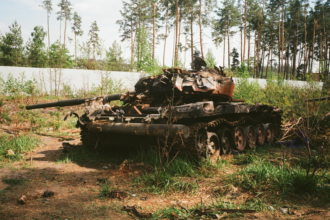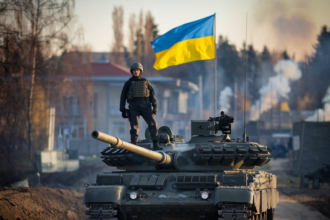Russian Claims and Ukrainian Response
As part of its continuous drive towards essential population centres in the Donetsk area, Russia’s military has declared the seizure of Niu-York, a tiny town in eastern Ukraine. While stating that Russian soldiers are targeting surrounding regions, the Ukrainian army has not verified the fall of the city. According to reports from the Ukrainian military, fighting in the area goes on, who are giving the Russian forces “a worthy rebuff”.
Though Niu-York is tiny, its takeover is considered a calculated step towards the more immense Donetsk centres of Toretsk and Pokrovsk. < It is thought that Ukrainian attempts to grab land in Russia’s Kursk area are meant to deflect Russian soldiers from their eastern assault. Though Ukraine’s commander-in-chief, Oleksandr Syrskyi, asserts control of 93 Russian villages and towns, there is little proof that Russian soldiers have been diverted.
Ukrainian Leadership's Perspective
Although President Volodymyr Zelensky has described the circumstances in the east as problematic, he has commended Ukrainian soldiers for their unrelenting combat against Russian forces. He pointed out that Russia is increasing its front-line presence.
“The situation remains difficult, but our troops are doing everything in their power to destroy the Russian forces,” Zelensky declared. “We are committed to fighting back and reclaiming our territory.”
Russian Claims and Strategic Importance
A statement issued by the Russian Defense Ministry claims that aggressive actions by its Center forces group have routed Ukrainian soldiers from Niu-York. Referring to Niu-York’s Russian name, Novgorodskoye, the ministry characterised it as “one of the largest settlements of the Toretsk agglomeration and a strategically important logistics hub”.
Russian military bloggers have shared a video of a Russian tricolour flag on Niu-York’s school roof, accompanied by the Ukrainian flag on the ground. But initially spotted two weeks ago, this footage was out-of-date as Ukrainian troops had flown a drone on August 8, damaging the roof and removing the flag.
Continued Conflict and Strategic Movements
Niu-York is directly south of Toretsk, a mining town. Additionally, Russian forces claim authority over Zalizne, southeast of Toretsk. Though they have fewer reserves than the Russians, Ukrainian sources claim they are still fighting in Zalizne and maintaining control of around 20% of Niu-York.
As the Russian army advanced Monday, Ukrainian officials directed Pokrovsk’s evacuation. According to a military briefing, over one-third of Russia’s 87 assaults that day were directed against moving into Pokrovsk. Russian forces are reportedly around 10 kilometres (6 miles) from Pokrovsk’s outskirts. Local authorities Regional director Vadym Filashkin pointed out that 53,000 people—including over 4,000 children—still call Pokrovsk home.
Ukrainian Counter-Offensive and Russian Reactions
With Ukrainian authority spanning 1,263 sq km and 93 populated centres, Ukraine’s counter-offensive in the Kursk area has expanded 28–35 km beyond the border. Reacting, Russian Defence Minister Andrei Belousov has created three fresh military groups to handle the Ukrainian operation in the Kursk, Belgorod, and Bryansk areas. Their primary responsibility will be to protect “citizens and territories from attacks,” including those from drones and other attack techniques.
Russian Downplaying and Civilian Impact
Russian authorities have underlined the failure of the Ukrainian operation in Kursk. Commander of Chechnya’s Akhmat special forces, Major General Apti Alaudinov, said that Ukrainian soldiers had suffered heavy casualties. Saying, “The fact that some bridge has been blown up doesn’t mean anything,” he discounted the damage to three bridges over the River Seym.
Still, state news outlet Tass notes that broken bridges are forcing local authorities to evacuate residents using privately owned boats. According to reports, many people are lining up to get blankets, pillows, and more basic needs.
Putin's Reaction and Historical Comparisons
Seemingly taken aback by the Ukrainian attack, Russian President Vladimir Putin likened the circumstances to the 2004 Beslan school massacre carried out by Chechen extremists, which claimed over 300 lives. Referring to an old Russian imperial term for areas of seized Ukraine, Putin said, “Just as we fought with terrorists previously, now we fight with those who commit crimes in Kursk region, Donbas, and Novorossiya,” on a visit to the school and to meet with the victims’ families in North Ossetia.








